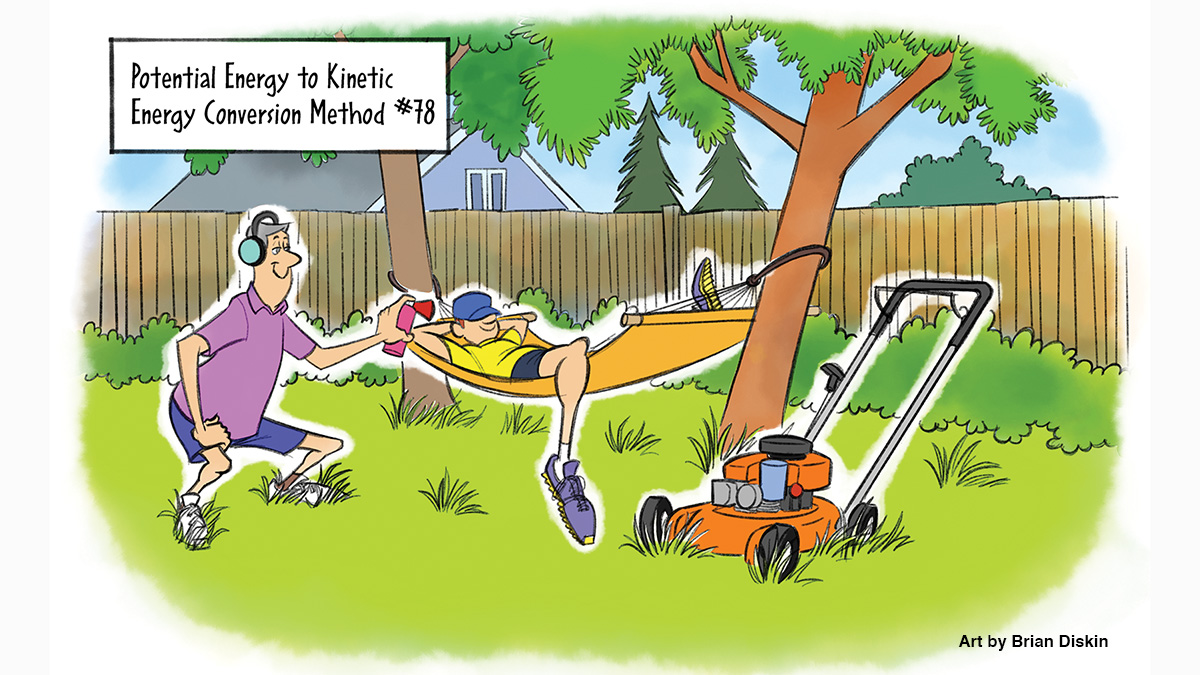Research and Teaching
Pandemic-Inspired Insights
What College Instructors Learned From Teaching When COVID-19 Began
Journal of College Science Teaching—September/October 2021 (Volume 51, Issue 1)
By Tessa Andrews and Kathryn Green
College instructors faced a rapid transition to remote instruction in spring 2020, and with it a host of new teaching challenges. This qualitative study investigates what 26 college biology instructors learned about students and teaching during this time. We used semi-structured interviews and content analysis to identify instructor learning that is relevant beyond the COVID-19 pandemic. Participants described two related insights about students: They became more aware that students’ lives outside the classroom are complex, and they realized that their campus can act as a neutralizing space for students. Participants also reconsidered how they assess student learning. New realizations about students and teaching have the potential to impact teaching practices when in-person instruction resumes. Especially promising is an increased focus on students as individuals and the recognition that not all students experience life and courses in the same way. We relate findings to existing research and propose self-reflection questions that these findings raised for us.
College instructors faced a rapid transition to remote instruction in spring 2020, and with it a host of new teaching challenges. This qualitative study investigates what 26 college biology instructors learned about students and teaching during this time. We used semi-structured interviews and content analysis to identify instructor learning that is relevant beyond the COVID-19 pandemic.
College instructors faced a rapid transition to remote instruction in spring 2020, and with it a host of new teaching challenges. This qualitative study investigates what 26 college biology instructors learned about students and teaching during this time. We used semi-structured interviews and content analysis to identify instructor learning that is relevant beyond the COVID-19 pandemic.
Research and Teaching
STEM Scholars’ Sense of Community During the COVID-19 Pandemic
Journal of College Science Teaching—September/October 2021 (Volume 51, Issue 1)
By Jennifer McGee and Rahman Tashakkori
The purpose of this study was to investigate sense of community (SOC) within a STEM learning community during the COVID-19 pandemic. The STEM learning community that was the setting for this study is funded by a National Science Foundation (NSF) S-STEM grant. A mixed methods design was used to investigate levels of SOC and changes in SOC from December 2019 to December 2020. Scholars completed the Sense of Community Index (SCI-2) (Chavis et al., 1986) during this time along with answering questions about their experience in the program. Data showed evidence of a slight increase in SOC, when compared to prepandemic SOC. Three themes emerged from the qualitative data to support this finding: community as access, community as sanctuary, and community as sacred. When data were coded for the presence of these themes across time, a slight decrease in the focus on community as access appeared from December 2019 to December 2020, but there were increases in the focus on sanctuary and sacredness of the community. Triangulation of the data provides evidence for this STEM learning community as an important support system for students during this time of unprecedented uncertainty in higher education.
The purpose of this study was to investigate sense of community (SOC) within a STEM learning community during the COVID-19 pandemic. The STEM learning community that was the setting for this study is funded by a National Science Foundation (NSF) S-STEM grant. A mixed methods design was used to investigate levels of SOC and changes in SOC from December 2019 to December 2020. Scholars completed the Sense of Community Index (SCI-2) (Chavis et al., 1986) during this time along with answering questions about their experience in the program.
The purpose of this study was to investigate sense of community (SOC) within a STEM learning community during the COVID-19 pandemic. The STEM learning community that was the setting for this study is funded by a National Science Foundation (NSF) S-STEM grant. A mixed methods design was used to investigate levels of SOC and changes in SOC from December 2019 to December 2020. Scholars completed the Sense of Community Index (SCI-2) (Chavis et al., 1986) during this time along with answering questions about their experience in the program.
Research and Teaching
Comparison of Student Outcomes and Evaluations in Hybrid Versus Face-to-Face Anatomy and Physiology I Courses
Journal of College Science Teaching—September/October 2021 (Volume 51, Issue 1)
By Sanjeeda Jafar and Viji Sitther
In this study, two sections of undergraduate Introductory Anatomy and Physiology taught in the traditional face-to-face format (n = 58) was compared to two hybrid classes (n = 38) using the flipped-classroom model taught by the same instructor. Formative and summative examination scores were compared to determine the effect of the different learning methods. Our results revealed no significant difference between the mean scores of summative examinations and between the traditional and hybrid classes (p > 0.05). Of five quizzes administered, students taught in the traditional format scored significantly higher in only one of five quizzes. In addition, comparison of in-class laboratory examination scores showed no difference (P > 0.05) in three out of four. However, student evaluations of the hybrid classes were more positive as determined by end-of-course evaluations (4.54 versus 2.9 on a 1–5 Likert scale). This is the first study that compares a hybrid versus a traditional science course at a historically black college or university. We conclude that comparison of student outcomes in traditional versus hybrid Anatomy and Physiology I classes were similar. At a time when all institutions of higher learning have adopted online learning and distance learning due to the COVID-19 pandemic, this is a timely comparison.
In this study, two sections of undergraduate Introductory Anatomy and Physiology taught in the traditional face-to-face format (n = 58) was compared to two hybrid classes (n = 38) using the flipped-classroom model taught by the same instructor. Formative and summative examination scores were compared to determine the effect of the different learning methods. Our results revealed no significant difference between the mean scores of summative examinations and between the traditional and hybrid classes (p > 0.05).
In this study, two sections of undergraduate Introductory Anatomy and Physiology taught in the traditional face-to-face format (n = 58) was compared to two hybrid classes (n = 38) using the flipped-classroom model taught by the same instructor. Formative and summative examination scores were compared to determine the effect of the different learning methods. Our results revealed no significant difference between the mean scores of summative examinations and between the traditional and hybrid classes (p > 0.05).
cross-curricular connections
Science and Language Shifts in a Diverse Fourth-Grade Classroom
Science and Children—September/October 2021 (Volume 59, Issue 1)
By Alison Haas, Jennifer Whitten, and Carol Biskupic Knight

engineering encounters
A Thrilling Roller-coaster Ride
The Ups and Downs of Learning Force and Motion: A Fifth-Grade Learning Progression
Science and Children—September/October 2021 (Volume 59, Issue 1)
By Dena Harshbarger and Joseph Wiechman
start with phenomena
Learning the Temperature Dependency of Matter by Making Ice Cream
Science and Children—September/October 2021 (Volume 59, Issue 1)
By Patrick Brown
Teaching Teachers
Not Your Average Parachute
How we transformed our parachutes investigation to capture the vision of the Next Generation Science Standards
Science and Children—September/October 2021 (Volume 59, Issue 1)
By Kelsey Lipsitz, Fred Stein, Lynn Rankin, Barry Kluger-Bell, and Rachel Jordan
From the Field: Events and Opportunities, August 24, 2021
By Debra Shapiro

Science 101
Q: What Is Energy?
feature
Motivating Three-Dimensional Learning From Students’ Questions
Supporting elementary students’ three-dimensional learning about waves with a storyline unit
Science and Children—September/October 2021 (Volume 59, Issue 1)
By Tara A.W. McGill, Gail Housman, and Brian J. Reiser




